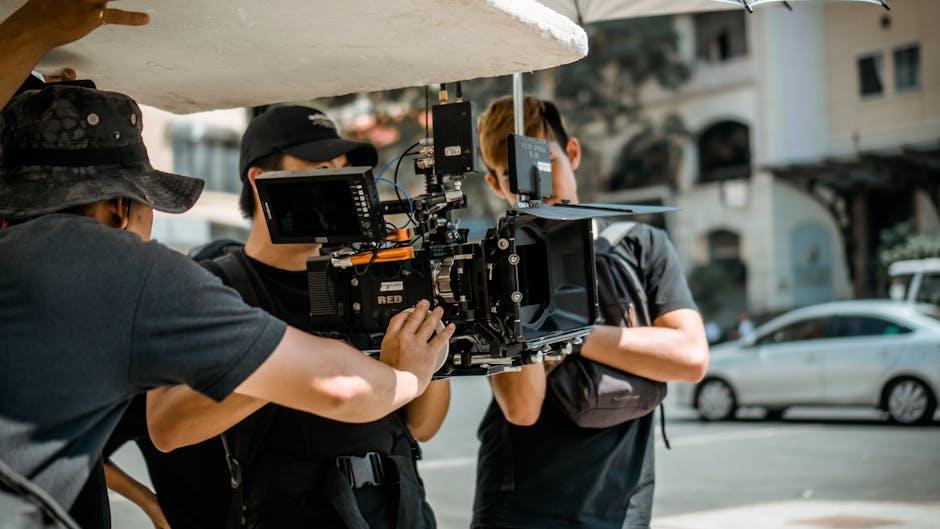In the ever-evolving realm of film production, the seamless integration of CGI and practical effects stands as a testament to both innovation and tradition. As filmmakers strive to create immersive worlds that captivate audiences, the delicate dance between digital wizardry and tangible craftsmanship becomes paramount. This article delves into the best practices for marrying these two dynamic forces, offering insights into how directors, visual effects artists, and practical effects teams can collaborate to enhance storytelling. Whether conjuring mythical creatures or crafting explosive action sequences, the harmony of CGI and practical effects can transform the cinematic experience, blending the fantastical with the authentic. Join us as we explore the strategies that bring the magic of movies to life.
Balancing Artistry: Merging CGI with Practical Effects
In the realm of modern filmmaking, the harmonious blend of CGI and practical effects is a testament to both innovation and tradition. Striking the right balance involves understanding the strengths of each medium. CGI offers limitless possibilities, enabling filmmakers to create worlds and creatures beyond the constraints of reality. On the other hand, practical effects bring a tangible authenticity, grounding the audience in the story with textures and shadows that are challenging to replicate digitally.
To achieve this balance, filmmakers can employ several best practices:
- Pre-visualization: Utilize storyboards and animatics to map out scenes, determining where each type of effect will have the most impact.
- Collaboration: Foster communication between VFX artists and practical effects teams to ensure seamless integration.
- Testing: Conduct tests with both CGI and practical elements to evaluate their synergy before final production.
- Hybrid Techniques: Consider using miniatures or animatronics enhanced with digital overlays to create a richer visual experience.
By embracing the strengths of both CGI and practical effects, filmmakers can craft immersive worlds that captivate and resonate with audiences.

Crafting Seamless Scenes: Techniques for Cohesive Integration
In the realm of modern filmmaking, the art of blending CGI with practical effects demands a nuanced approach. To achieve a seamless fusion, filmmakers often rely on a few key techniques. First, maintaining a consistent lighting environment is crucial. By ensuring that CGI elements are lit in harmony with the practical effects, the illusion becomes more convincing. Additionally, using practical effects as a base can serve as an anchor for CGI, offering a tangible reference that enhances believability.
- Pre-visualization: Helps plan the integration of CGI and practical elements effectively.
- Color Matching: Ensures both digital and physical components share the same palette.
- Camera Tracking: Aligns CGI elements accurately with live-action footage.
Moreover, collaboration between departments is essential. By fostering communication between the CGI artists and practical effects teams, filmmakers can create scenes where both elements support and enhance each other, crafting a visual narrative that feels both immersive and realistic.
The Role of Lighting: Enhancing Realism in Hybrid Effects
Lighting is the unsung hero in the seamless integration of CGI and practical effects, acting as a bridge between the digital and the tangible. It plays a crucial role in ensuring that both elements coexist naturally within a scene. By manipulating shadows, highlights, and color temperatures, filmmakers can craft a unified visual experience that enhances the audience’s suspension of disbelief.
- Consistency: Matching the lighting conditions between CGI and practical elements is vital. This involves replicating natural light sources, angles, and intensities.
- Realistic Shadows: Shadows help anchor CGI elements in the real world. Ensuring they align with practical objects can significantly boost realism.
- Dynamic Lighting: Incorporating interactive lighting effects that respond to both digital and physical components can add a layer of depth and authenticity.
Utilizing tools like HDR imaging and advanced rendering techniques, filmmakers can meticulously control the interplay of light and shadow, creating a cohesive visual narrative. Lighting is not just about visibility; it’s about storytelling, shaping the mood and guiding the viewer’s eye, ensuring that every element—be it CGI or practical—feels part of a unified whole.

Cost and Creativity: Budgeting for Blended Visuals
Balancing the budget between CGI and practical effects can be a complex dance of cost management and creative ambition. Producers and directors must first assess the script to identify which scenes demand the realism of practical effects and which can benefit from the limitless possibilities of CGI. Considerations include the scale of the effect, the desired emotional impact, and the timeline for production.
- Prioritize Hybrid Solutions: Opt for a mix of both techniques where feasible. Combining CGI with practical elements often yields the most convincing results.
- Invest in Pre-visualization: Early planning can reveal which effects can be executed cost-effectively without compromising quality.
- Leverage Technology Wisely: Utilize cost-effective software solutions and emerging technologies to streamline CGI processes.
By strategically allocating resources and embracing a flexible approach, filmmakers can craft visually stunning narratives without overextending their budgets.

